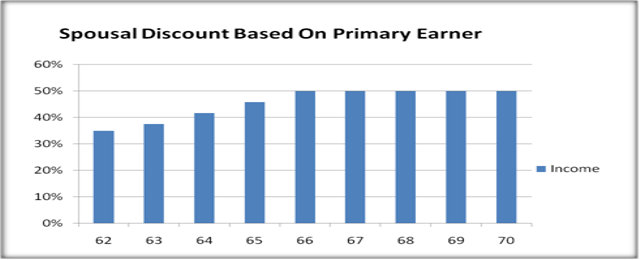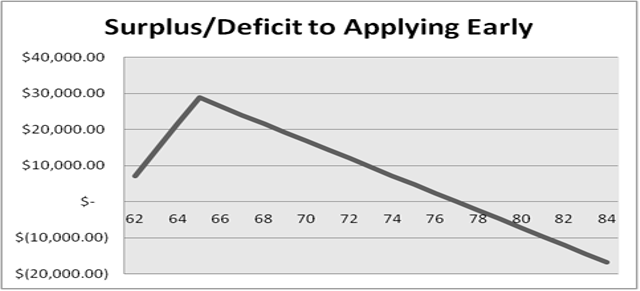Q: My husband Thomas is four years older than me and plans to delay filing for his larger Social Security benefit until age 70 when he will receive $2,600 a month. My personal benefit starts at $600 beginning at age 62. If I begin taking my own benefit early, how will this affect the spousal benefits I can expect to receive in the future?
Sincerely, Martha Jefferson
Dear Martha Jefferson,
Filing for Social Security represents the most significant onetime decision in a typical couple’s financial life after deciding when to retire. Making a wrong decision can cost a couple up to $250,000 in future benefits, and so I applaud you for considering your options.
Your husband has been wisely counseled to delay claiming his own larger benefit until age 70. Thomas’s benefit will grow from $2,000 a month at age 66 (this is called the Primary Insurance Amount, or PIA) to $2,600 a month by age 70.
When Thomas files for his own benefit, you will be age 66 (four years younger) and eligible for 50% of Thomas’s PIA, or $1000. There is no reason to delay claiming spousal benefits after age 66 because 50% of PIA is the maximum you can receive in spousal benefits.
However, when you apply for your personal benefit early, your future spousal benefit can also be reduced. In your case, you will receive a $200 reduction for filing early. Social Security calculates this using an excess benefit formula that subtracts the difference between the maximum spousal benefit and your own PIA. Your excess benefit is determined by subtracting $800 (your PIA) from $1000 (your maximum spousal benefit).
The question you need to ask is whether a $600 benefit from age 62 to age 66 is worth a $200 reduction from age 66 to life expectancy. It turns out that your breakeven year for claiming early is around age 77 for yourself (when Thomas is 81). This means that if you plan to live past age 77, you should avoid claiming early. You can see below how the breakeven amount is calculated as you age. This chart is the difference in total benefits at each age between filing early at 62 and waiting until age 66.
The only additional consideration that you should consider is whether you plan to earn a significant income over the next four years. If so, a Social Security earnings penalty could conflict with any benefit you hope to receive from filing early.
It is important that readers do not attempt to project these solutions on all spousal income scenarios. Social Security has at least three variations of a spousal formula that are very particular. A situation we have not yet even mentioned occurs when the higher earning spouse claims benefits before the lower earning spouse begins.
Life expectancy for male retirees is around age 83 and for female retirees is around age 86. Martha, you well do will to plan on living a long and healthy life and avoid the temptation to take your benefits at age 62.
If you have a money question that is nagging at you, please submit it using our contact page, http://www.marottaonmoney.com/contact. We try to respond to every question. If yours is chosen for MONEY QUESTIONS, we will give you a pseudonym and let you know the date the Q&A is published.


2 Responses
Kath Welch
Don’t forget to tell Martha that if she starts taking benefits at age 62, Thomas will be 66 and can take a spousal benefit until age 70, at which point he can switch to his own account at the maximum benefit. A couple always needs to look at their Social Security situation as a unit, not as individuals.
Matthew Illian
Kath Welch, you are referring to a restricted filing or what I call File As A Spouse First (FAASF). The analysis of these situations is extremely complex which is why I believe it is absolutely necessary to consult with an adviser who is proficient in analyzing Social Security before filing. In this case, the Jeffersons would be better off by using the File and Suspend strategy. If Thomas Files and Suspends at age 66, Martha would be eligible for 35% of his PIA which is approximately $910 a month. If they use FAASF, they would only be eligible for $750 a month ($450 for Martha’s benefit and $300 for Thomas’ spousal benefit).